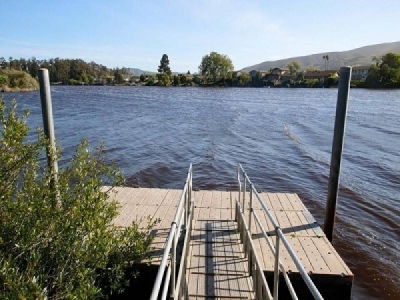
Posted on August 9, 2016
By Nick Wilson, The Tribune
For decades, sediment build-up in San Luis Obispo’s Laguna Lake has made the natural body of water shallower in places, impacting wildlife and recreation.
Without any dredging, the levels of silt have only worsened since Prefumo Creek was rerouted into the lake in the 1960s. Creekside banks have eroded, contributing to the problem.
The city held a community forum Thursday at Laguna Middle School to lay out four main options for the dredging, which would cost $5 million, $8million to $10 million, or $20 million depending on the extent of the work.
The forum was held in advance of a Sept. 20 San Luis Obispo City Council meeting, when it may decide on the extent of the dredging and how to finance the project. The actual work is expected to be done in mid-2018 after permitting and financing options are in place.
“The community has been talking about dredging Laguna Lake for 30 to 40 years now,” said Bob Hill, the city’s natural resources manager. “Prefumo Creek has brought substantial sedimentation into the lake. In the center lake, lake depths, even when the lake is relatively full, are only 1 to 3 feet. We are starting to see dramatic changes in the appearance of the lake.”
Hill said that under normal circumstances, the lake is 7 to 9 feet deep. A major storm can add as much as a foot of sediment, though in an average year the lake experiences about 1 to 3 inches of sedimentation.
Bob Hill, the city of San Luis Obispo’s natural resource manager, talks about the possibilities for a future dredging project at Laguna Lake in San Luis Obispo.
A lake with deeper capacity better accommodates recreational activities such as boating and windsurfing, improves water quality, better controls flooding, and enhances the habitat for wildlife such as fish and birds. That includes lowering the water temperatures.
A dredging project could remove enough sediment so the city wouldn’t have to repeat the process for another 20years or so, Hill said.
The dredging options the City Council will consider range from removing 36,500 cubic yards to 167,000 cubic yards of slurry. The smaller-scale project would focus on buildup in the middle of the lake, while the larger-scale option would affect a majority of the center and southeastern arm of the lake.
The larger project would include dredging on the southeastern section that borders homes along Oceanaire Drive.
A barge in the lake would transfer the sludge to “dewatering” stations to remove moisture before disposing of the sediment.
The city is proposing using the extracted sediment as daily cover at Cold Canyon Landfill, though some at Thursday’s meeting pushed for other options that would involve less trucking to and from the lake.
The community has been talking about dredging Laguna Lake for 30 to 40 years now.
Hill, however, said that because of the presence of low levels of hexavalent chromium in the silt, dumping sediment anywhere near the Laguna Lake site could kick up carcinogens and make them airborne, which could be harmful to residents.
Hill laid out the funding options for the project, which include using city General Fund money and assessing landowners either near the lake or throughout the city. The percentage of city funds versus assessed fees is still to be determined.
Those who live in the Laguna Lake neighborhood adjacent to the natural body of water could have higher assessments than other city residents, but that hasn’t been determined.
Some people at the forum called for all city residents to share equally in the cost, saying the park and lake are used by the entire community. Others, however, noted that property values are about $100,000 higher for lakefront homes and said they’d be willing to pay more for the dredging than other city residents.
State grants are available for improvements at the lake, such as upgrades of the boat launch area, but not for dredging, Hill said. The city also plans to stabilize some of the banks that have eroded, including around Laguna Lake Golf Course.
A dredging project could be financed with a fixed interest loan, set by a loan committee, as part of the Infrastructure State Revolving Fund Program. That program financed the San Luis Obispo County Regional Airport expansion at 3.45 percent interest.
Source: The Tribune





